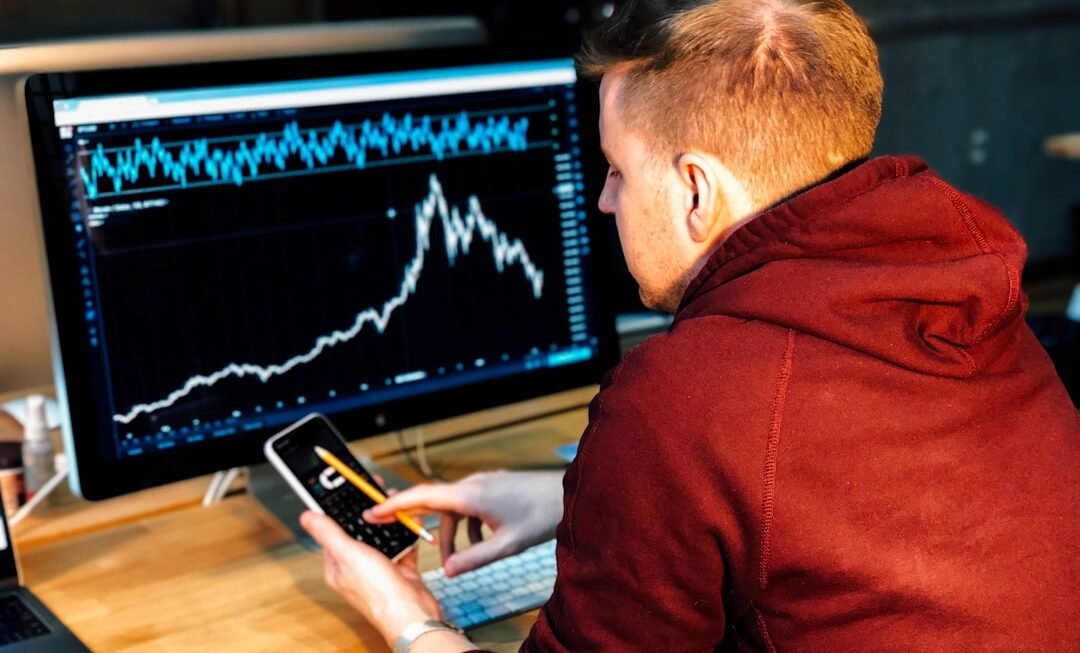Forex trading, also known as foreign exchange trading, is the process of buying and selling currencies in the foreign exchange market with the aim of making a profit. The forex market is the largest and most liquid financial market in the world, with an average daily trading volume exceeding $6 trillion. Unlike stock trading, forex trading does not have a central exchange, and it operates 24 hours a day, five days a week.
The forex market is influenced by a wide range of factors, including economic indicators, geopolitical events, and central bank policies. To trade forex, one must understand the concept of currency pairs. A currency pair represents the exchange rate between two currencies.
The first currency in the pair is called the base currency, whilst the second currency is called the quote currency. For example, in the EUR/USD currency pair, the euro is the base currency, and the US dollar is the quote currency. When one buys a currency pair, one is essentially buying the base currency and selling the quote currency.
If one believes that the base currency will strengthen against the quote currency, one would buy the pair. Conversely, if one believes that the base currency will weaken against the quote currency, one would sell the pair. In forex trading, one can profit from both rising and falling markets.
If one believes that a currency pair will increase in value, one would buy (go long) the pair. On the other hand, if one believes that a currency pair will decrease in value, one would sell (go short) the pair. The objective of forex trading is to buy low and sell high or sell high and buy low, depending on one’s market outlook.
It is important to note that forex trading involves a high level of risk and may not be suitable for all investors.
Choosing a Reliable Forex Broker
Choosing a reliable forex broker is crucial to your success as a forex trader. A forex broker acts as an intermediary between you and the interbank forex market, providing you with access to trading platforms, market analysis, and customer support. When selecting a forex broker, there are several factors to consider.
First and foremost, you should ensure that the broker is regulated by a reputable financial authority. Regulation helps to protect traders from fraud and ensures that brokers adhere to strict financial standards. Another important factor to consider when choosing a forex broker is the trading platform.
The trading platform is your gateway to the forex market, so it’s essential to choose a platform that is user-friendly, reliable, and offers advanced trading tools. Additionally, you should consider the broker’s trading costs, including spreads, commissions, and overnight financing rates. Low trading costs can significantly impact your overall profitability as a trader.
Furthermore, it’s important to assess the quality of customer support offered by the broker. In the fast-paced world of forex trading, having access to responsive and knowledgeable customer support can make a significant difference in your trading experience. Finally, you should consider the range of financial instruments offered by the broker, as well as any additional services such as educational resources and market analysis.
By carefully evaluating these factors, you can choose a reliable forex broker that meets your trading needs.
Setting Up a Trading Account
Once you have chosen a reliable forex broker, the next step is to set up a trading account. Most brokers offer different types of trading accounts to cater to the needs of various traders. When opening a trading account, you will need to provide personal information and undergo a verification process to comply with anti-money laundering regulations.
After your account has been verified, you can fund it through various payment methods such as bank transfer, credit/debit card, or electronic wallets. When setting up a trading account, it’s important to consider factors such as account currency, leverage, and account types. The account currency is the currency in which your trading account will be denominated.
It’s advisable to choose a currency that aligns with your financial situation and trading objectives. Leverage allows you to control a larger position size with a smaller amount of capital. While leverage can amplify your potential profits, it also increases your risk exposure, so it’s crucial to use it judiciously.
Furthermore, forex brokers offer different types of accounts with varying features and minimum deposit requirements. Common account types include standard accounts, mini accounts, and managed accounts. Each account type has its own advantages and considerations, so it’s important to choose an account type that suits your trading style and risk tolerance.
By carefully setting up your trading account, you can lay the foundation for a successful forex trading journey.
Learning the Fundamentals of Technical and Fundamental Analysis
To become a successful forex trader, it’s essential to learn the fundamentals of technical and fundamental analysis. Technical analysis involves studying historical price data and using various technical indicators to identify potential trade opportunities. Common technical indicators include moving averages, oscillators, and trend lines.
Technical analysis helps traders to identify trends, support and resistance levels, and potential entry and exit points for trades. On the other hand, fundamental analysis involves evaluating economic indicators, central bank policies, geopolitical events, and other macroeconomic factors that can impact currency prices. Fundamental analysis helps traders to understand the underlying forces driving currency movements and make informed trading decisions based on economic data releases and geopolitical developments.
Both technical and fundamental analysis play a crucial role in forex trading, and many successful traders use a combination of both approaches to make trading decisions. By gaining a solid understanding of technical and fundamental analysis, you can develop a well-rounded approach to analysing the forex market and improve your ability to identify high-probability trade setups.
Developing a Trading Strategy
Developing a trading strategy is an essential step towards becoming a successful forex trader. A trading strategy outlines your approach to entering and exiting trades based on predefined criteria and rules. There are various types of trading strategies, including trend following strategies, range trading strategies, breakout strategies, and carry trade strategies.
When developing a trading strategy, it’s important to consider factors such as risk tolerance, time horizon, and market conditions. A well-defined trading strategy helps traders to maintain discipline and consistency in their trading approach. It also provides a framework for managing risk and maximising potential profits.
Additionally, having a trading strategy allows traders to backtest their approach using historical data to assess its performance under different market conditions. Moreover, it’s important to adapt your trading strategy to changing market conditions and continuously refine it based on your trading experience. By developing a robust trading strategy that aligns with your trading goals and risk tolerance, you can enhance your chances of success in the competitive world of forex trading.
Managing Risk and Setting Realistic Goals
Risk management is a critical aspect of forex trading that can significantly impact your long-term success as a trader. Effective risk management involves identifying and mitigating potential risks associated with your trades. One common risk management technique is using stop-loss orders to limit potential losses on a trade.
A stop-loss order is an order placed with your broker to close a position at a predetermined price level. Additionally, it’s important to diversify your trading portfolio by not putting all your capital into one trade or one currency pair. Diversification helps spread risk across different assets and reduces the impact of adverse price movements on your overall portfolio.
Setting realistic goals is also crucial for long-term success in forex trading. It’s important to set achievable targets for your trading performance and avoid succumbing to unrealistic expectations or greed. By setting realistic goals based on your trading capital and risk tolerance, you can maintain a disciplined approach to trading and avoid making impulsive decisions driven by emotions.
Practicing with a Demo Account before Trading with Real Money
Before diving into live trading with real money, it’s highly recommended to practice with a demo account first. A demo account allows you to trade in a simulated environment using virtual funds without risking any real capital. This provides an excellent opportunity for novice traders to familiarise themselves with the dynamics of the forex market, test different trading strategies, and gain practical experience without incurring any financial risk.
Practicing with a demo account also allows traders to become proficient in using their chosen trading platform and familiarise themselves with its features and tools. Additionally, it provides an opportunity to refine their risk management skills and gain confidence in executing trades effectively. Furthermore, using a demo account can help traders assess their emotional responses to trading and develop discipline in adhering to their trading plan.
By honing their skills and gaining confidence through demo trading, traders can transition to live trading with real money more prepared and equipped for success in the challenging world of forex trading. In conclusion, forex trading offers significant opportunities for profit but requires dedication, discipline, and continuous learning. By understanding the basics of forex trading, choosing a reliable forex broker, setting up a trading account thoughtfully, learning technical and fundamental analysis fundamentals, developing a robust trading strategy, managing risk effectively while setting realistic goals, and practicing with a demo account before transitioning to live trading with real money; traders can enhance their chances of success in this dynamic and competitive market.












